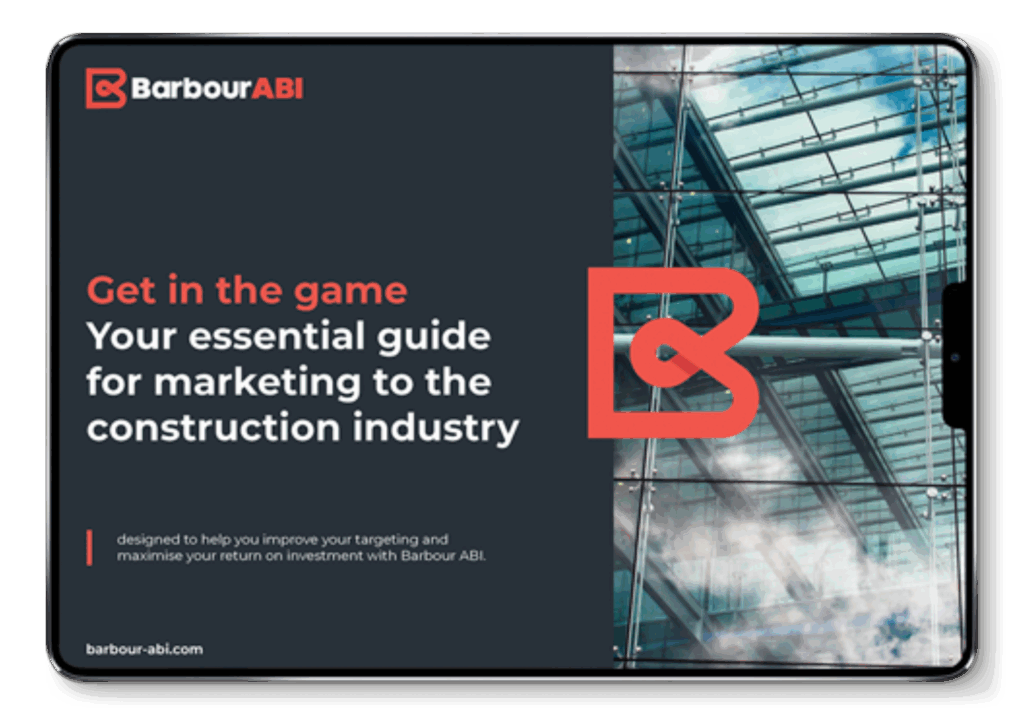Search marketing is changing – the construction industry needs to catch up
AI has changed the game for SEO permanently and the construction industry has an opportunity to change with it.
The good news is that optimising your website content for AI overviews is not so different from optimising for traditional search. In some cases, it’s actually encouraging better SEO practices and creating more conversation around the user journey.
The other bit of good news is that traditional search is still dominating the market. A study done by Ahrefs in March showed that only about 0.1% of referral traffic came from AI tools. However, other companies like SEMrush have predicted that AI search might start driving more visitors to websites than traditional search by 2028.
Where does that leave your construction company website?
Well, if you’re here trying to understand how to start implementing best practices then you’re one step ahead of most companies. Getting ahead now and adopting GEO early is the best way to future proof your construction company website.
If you’re a search marketer in the the construction industry looking to start optimising your content for AI overviews, this blog is for you.
SEO vs GEO: What’s the difference?
GEO, or Generative Engine Optimisation, is not replacing SEO – so go ahead and ignore those LinkedIn posts trying to tell you otherwise.
SEO gets you found on search engines, GEO gets you referenced in AI overviews.
Traditional SEO still reigns supreme as regular Google search still outweighs AI search. According to an article by the BBC, only 5.99% of search on desktop browsers went to LLMs as of July this year. (LLM stands for Large Language Model, they are tools like Gemini, ChatGPT, or Perplexity.) However to be referenced in AI overviews, before you can start amending your work to be GEO friendly, you must have a solid SEO foundation. They must go hand-in-hand.
Adding GEO to your checklist as a search marketer is going to be your key in taking your hard-earned SEO gains and winning referenced content in AI overviews. Before we get into best GEO practices and how construction companies can future proof their websites – we need to understand how these LLMs work.
How do LLMs decide which websites and pages to reference?
Your preferred AI chatbot pulls information from two bases:
- Training data – this is like the manufacturer’s settings. All AI bots come trained with facts and basic knowledge built in
- Retrieval Augmented Generation (RAG) – what AI uses when searching the web to find real-time responses where relevant.
When asking AI a question, the bot will divide your prompt into multiple search queries (AKA query fan-out) then use RAG to get other relevant resources for a response.
Wait, what about keywords?
Whilst keywords will always be vital in our SEO, LLMs are looking beyond keywords. What they’re looking for are direct answers to questions your user is asking.
To evaluate if your content could be used accurately in a generative response ask yourself this:
Is your site just providing the bare minimum information on your services or products, or are you answering real questions someone might have?
Think of it as content built for a specific POV. After all these are real users asking real questions about their problems.
Combining a POV question-answer strategy with your keyword strategy is essential to win in SERPS and AI overviews.
- Pro tip: An easy solution to this is by inserting a question in a header with the answer in paragraph text below. A lot of websites are starting to create question-based webpages to dominate in the AI overviews as well. Start off with questions in headers, FAQ’s, and technical explanations of your services or products for each audience type you have.
Best practices for GEO
Just like Google and any other search engine, LLMs use signals to decide which websites they should draw information from.
These signals vary from different LLMs but typically include:
Relevancy
AI overviews are trading-in standard keywords for contextual relevance. They’re looking to see if you’re providing comprehensive information for your specific audience. Answer pain points and provide direct solutions that specific personas can gain from your offering.
Recency
LLMs prioritise the freshest content. Look to add the latest year in your metas and slug if possible and where appropriate. Pages that could benefit from this could be blogs highlighting the ‘Top 10….’ Like our league tables pages, dynamic monthly reporting, and anything else relevant to the date.
EEAT
This golden rule of traditional SEO also rings true for LLMs. They signal to the likes of ChatGPT that your content is reliable.
Experience – Offer first-hand experience with your business. Things like case studies, use-case scenarios, purposefully built ‘About’ pages that describe how or why you built your solutions.
Expertise – this is how you show that you’re the expert in your field. Write comprehensive content to show LLMs and search engines that you’re the expert in your niche, and you have more than enough content and resource to prove it.
Authority – Are you recognised within your industry as a go-to source for information? You need to have your website backlinked and mentioned across the web through active backlink hunting, PR opportunities, and reviews.
Trust – The last but most important step of EEAT – without trust your site is nothing. Have clear and transparent information, cite your sources (even if you are the source, power that internal linking strategy), update regularly, and have genuine customer reviews
Structured and accessible formatting
- Use clear header structure
- Lead with your most important information – LLMs are scanning the top bits of pages to identify if your page has the right information it needs
- Ensure correct Schema Markup: Product, Review, HowTo, FAQ
- Avoid complex JavaScript
Noticing something? It’s not that different from traditional SEO. However, these LLMs are focusing heavily on authority – is your site and brand reputable? Are you mentioned across the web, under multiple channels?
Other elements that help AI crawlers find your content easily and effectively:
- Robust Alt Text on images and video
- FAQs (more on that below)
- Mentions>Backlinks – studies suggest that unlink mentions are being treated like backlinks within LLM signalling
Content that wins AI Overviews
Whilst we can add the above to our checklists, it’s also good practice to know what webpages LLMs want to see and are likely to crawl.
- Homepages
- Listicles (Top 10 Construction Projects in London, Top Offshore Wind Farm Projects, etc…)
- Stats pages (reports, analyses, etc)
- Free tools
- Downloads
- FAQs
Let’s look at how we can do this realistically.
Putting this into practice: How can construction companies optimise for AI overviews?
To put this into perspective, and for full transparency, here’s what we’re doing to optimise for AI overviews:
- Business type pages – We’re showcasing how all of our audience types can use our products for their specific needs to aid their pain points. We support this through product features that best suit them, best practices, testimonials, visual aids, and researched FAQs.
- Sector pages – In order to show the industry the variation of our data, we’re highlighting our extensive sector data. We update regularly to showcase top projects in those sectors, we provide question and answer content, provide tools to browse our project data, insert strong internal links, and FAQs.
- Case Studies – Where we highlight specific success stories in both text, image, and video format
- Free monthly reports – We provide free, ungated monthly reports to provide the latest analyses with our leading project planning data.
Construction companies can easily replicate what we, and other companies are doing, to win AI overviews. Create webpages and content like:
- Technical pages – explain how your product or service can be used. Explain in detail and go as in-depth as necessary to answer any questions a user might have.
- Add FAQs onto every single webpage – and make sure they’re applicable to that page and not just blanket statements for your website! If you can’t add an FAQ section onto a page for lack of questions, then you probably have a lack of content on the page.
- Showcase your projects – This is how you show your audience can see what you’ve been involved in. Share your success, testimonials, imagery, anything to show your users and LLMs that you have experience in your field.
- Listicles – “How-to’s” and “Top #’s” are great ways to publish your niche content into the world and in AI Overviews.
Key takeaways about optimising for GEO
To optimise for GEO, start with a strong SEO foundation. Make sure your content answers real user questions, not just targets keywords. Use question-led headers, clear structure, and ensure your schema is correct.
LLMs look for relevancy, recency, authority, and trust. That means producing up-to-date, comprehensive content that demonstrates expertise and experience in your field. Build pages that show first-hand proof of your work: case studies, FAQs, and sector insights all help signal reliability.
Ultimately, optimising for GEO is about creating helpful, well-structured, and authoritative content that serves real user intent – the same good practices that makes for great SEO today.




